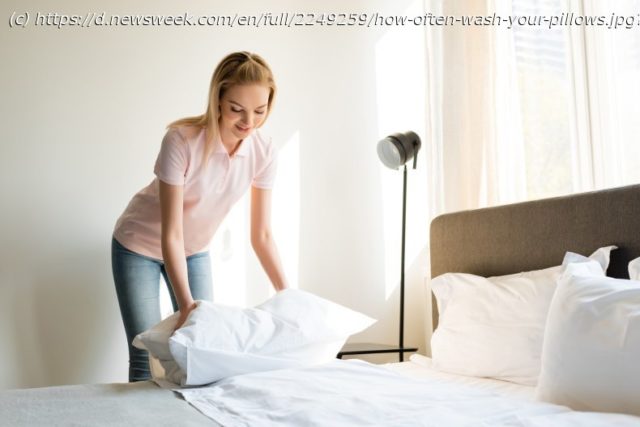Just because you use pillowcases, it doesn’t mean you’re not supposed to wash your pillows. See what experts have to say about this.
We all know to wash our sheets regularly to keep our beds clean and clear of bacteria, but how about our pillows? Experts say that because we spend about one-third of our lives in direct contact with them, keeping it clean should be a top priority.
Whether or not you use pillowcases along with your bedding, the pillows underneath should always be kept clean, too. That’s because, without regular maintenance, pillows can become bogged down with contaminants that can affect your wellness.
Over time, pillows accumulate substances like sweat, saliva, and other bodily fluids. These can create an unpleasant odor, as well as provide a breeding ground for bacteria, dust mites, and allergens. So it’s safe to say that a dirty pillow comes as a threat to your health.
Pillows can also collect mold spores and mycotoxins. Thanks to their small size, these particles can blow into a home, be tracked in by pets, or catch a ride on clothing. They’ll then be deposited all throughout the house on surfaces such as pillows. Finally, they can trap bacteria, which can be introduced onto the surface of a pillow in a variety of ways, such as through the skin, and continue to build up over time.
Rubino said: « Mold, in particular, is something we want to avoid on pillows. Unfortunately, though, they can easily become habitable locations. Mold requires two main things to begin growing: food and moisture. When it comes to food, the material in the pillow, skin cells, and other organic matter hanging around offer a plethora of options. As for moisture, high humidity, sweat, drool, spills, and more create ideal conditions for growth. If these are present for 24 to 48 hours, mold can grow on the pillow.
« Once that mold colony is established, it will begin creating and releasing more spores into the surrounding area, » Rubino added. « Some species of mold also produce microscopic toxins called mycotoxins. All of these particles are small enough to be inhaled, ingested, and absorbed into the body, which is why we want to avoid microbial growth in our homes and on surfaces like our pillows. Every time you lay your head down on a moldy pillow, microscopic particles will enter your body.
« Keeping them clean can improve the life span of the pillow; help it support ongoing wellness; and improve indoor air quality, » Rubino said.






